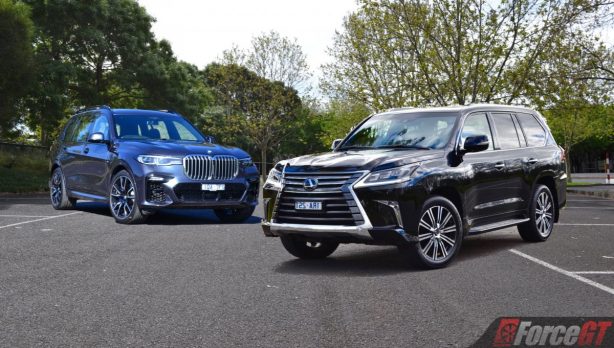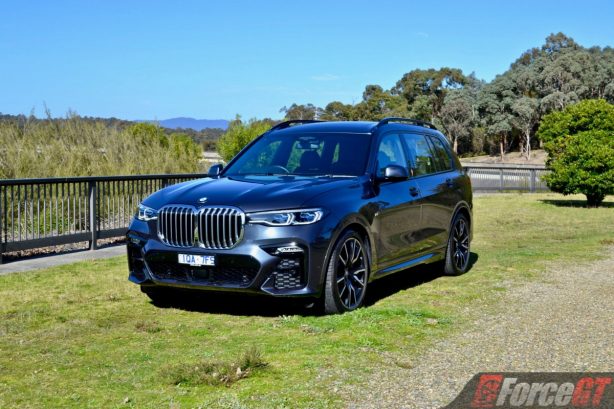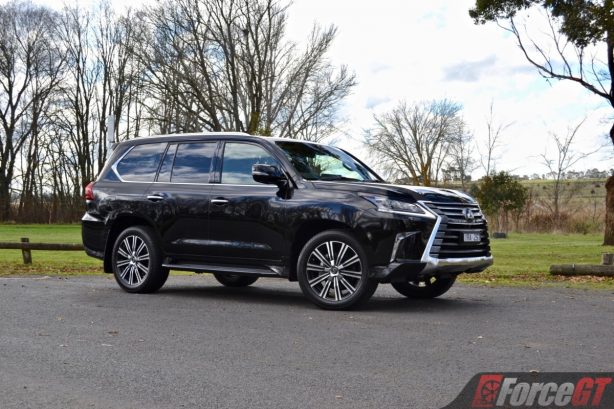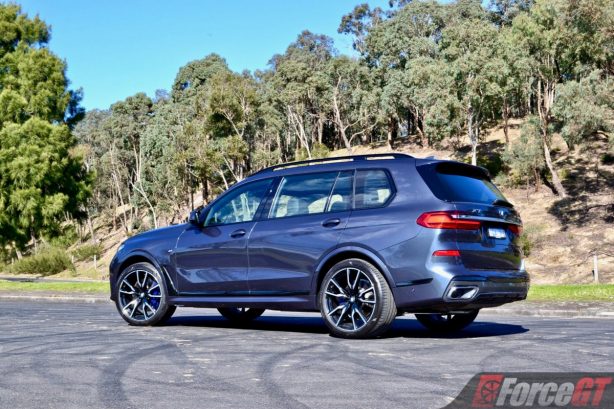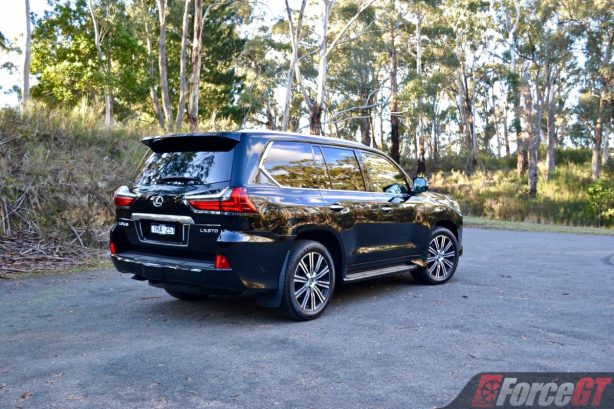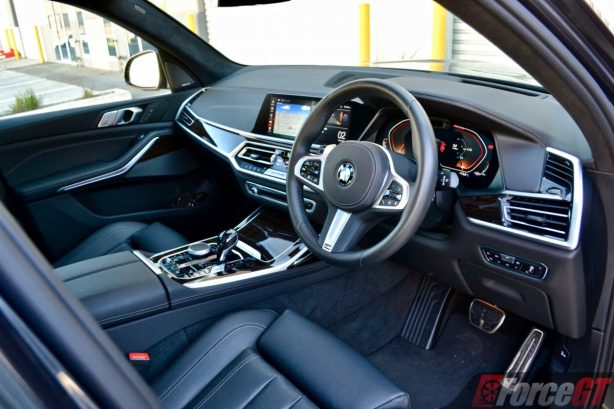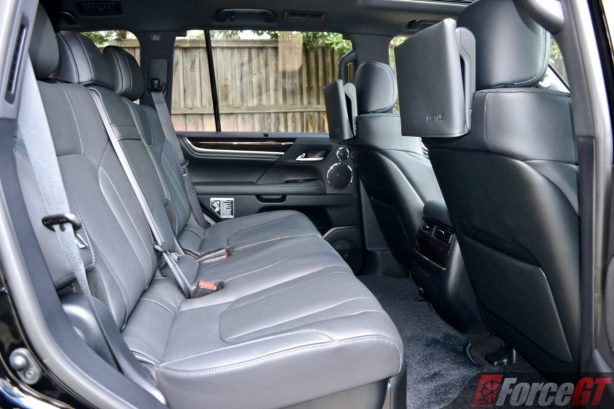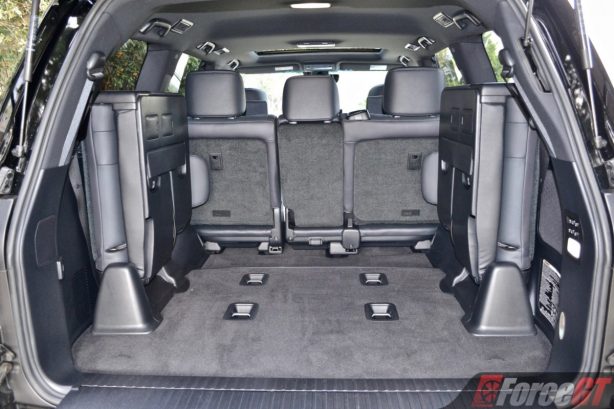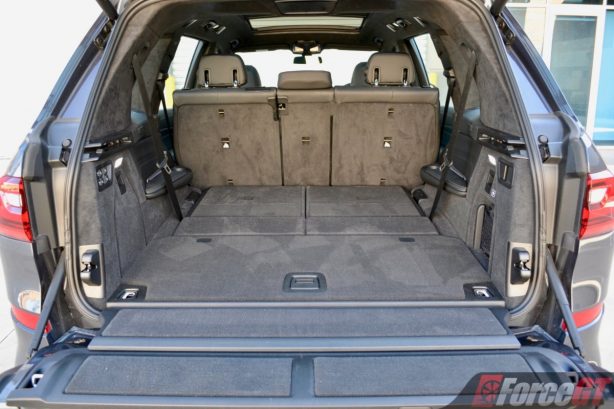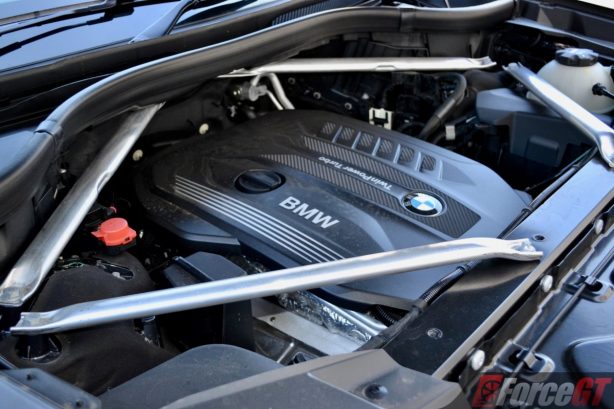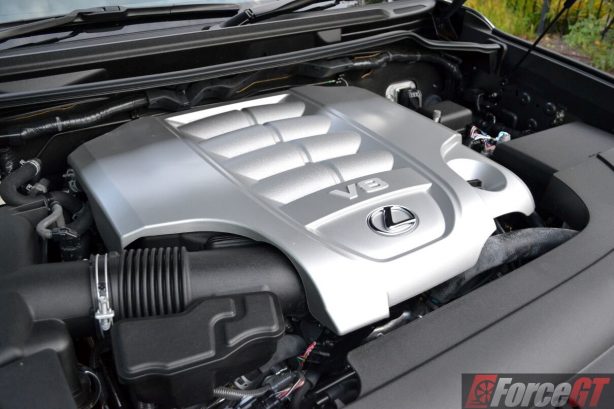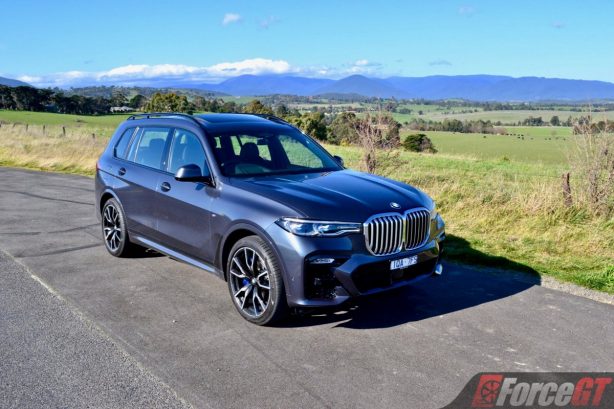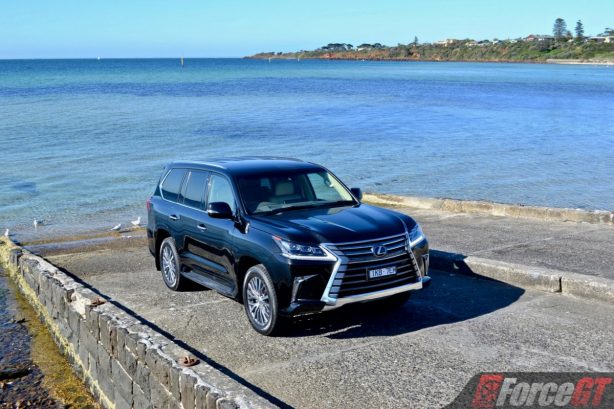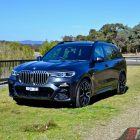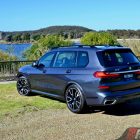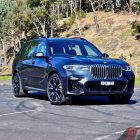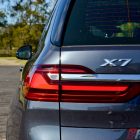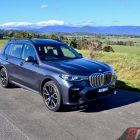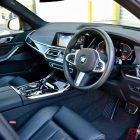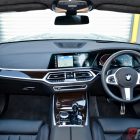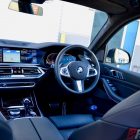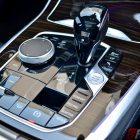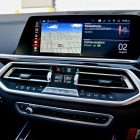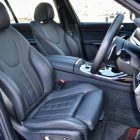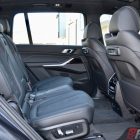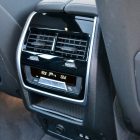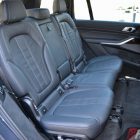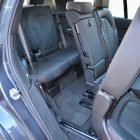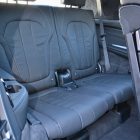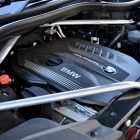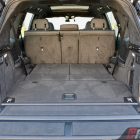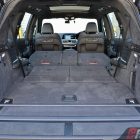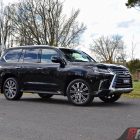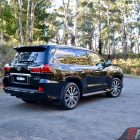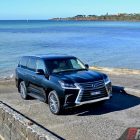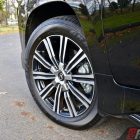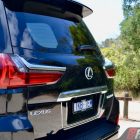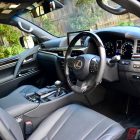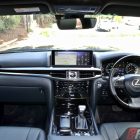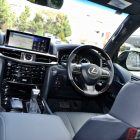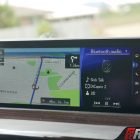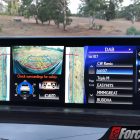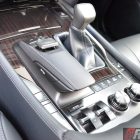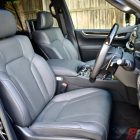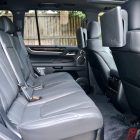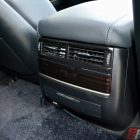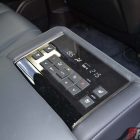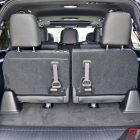The ultimate luxury on wheels used to be a flagship saloon the likes of BMW 7 Series or Lexus LS. Now, that’s been replaced by the SUV, the bigger the better. It’s the quintessential luxury family hauler, and the consummate wealth showcase.
So, here are two heavyweights going head to head. The BMW X7 takes on the Lexus LX in this seven-seater flagship luxury SUV showdown. Which of these should you splash your cash on? Read on..
Based on an adapted 7 Series platform, the X7 sits at the top of BMW’s SUV line-up, similar to the 7 Series’ top dog status in the brand’s passenger car range. We were given the keys to the mid-spec turbo-diesel X7 xDrive30d, which has a starting price of $133,900 plus on-road costs. Our tested has been optioned up with the M Sport package and other mouth-watering goodies, stretching the final figure to $163,900.
Unlike the BMW, the LX has no chassis relation with the LS – Lexus’ 7 Series fighter. Rather, the marque’s chief SUV is based on the Toyota LandCruiser Series 200, with which it shares the underpinnings. Our tester is the LX 570 V8 petrol model with a sticker of $140,500 plus on-road costs, bumped up to $156,500 thanks to the optioning up of an ‘enhancement pack’ which includes, amongst other luxurious appointments, a set of 21-inch wheels.
On the outside
Styling a humongous sever-seater family SUV is like drawing on a giant canvas. It’s not easy. But somehow, we are looking at two of the boldest large SUVs around. As if their size isn’t enough to make visual impact, both the X7 and LS feature some of the biggest grilles ever to grace a vehicle’s fascia. The BMW kidney grille on the X7 is truly massive, but even this is dwarfed by that enormous Lexus spindle grille on the LS. Impressively, both cars still manage to convey class in their overall designs despite their ghastly grilles.
The battle of the biggest tips in X7’s favour down south, with it riding on huge 22-inch wheels wrapped in fat rubber measuring 275/40 R22 at the front and 315/35 R22 in the rear. In comparison, the LS’ shoes are an inch smaller and wear 275/50R21 tyres.
Getting in and out of the vehicle is easier on the LX thanks to the side step, which also doubles up as a mud deflector to ensure your pants don’t get dirty when you get down from the car.
The X7’s less off-roading nature is evident with not just the lack of side steps, but also doors that don’t fully cover the side sills, exposing them to dirt which can easily transfer to your pants on egress.
Both SUVs get height adjustable air suspension which can be raised to increase ground clearance when traversing tricky terrain or lowered to ease cargo loading.
On the inside
Not surprising, the X7’s interior is largely based on the 7 Series which means first rate materials everywhere. But unlike the flagship saloon, the X7’s comfort is mostly centered up the front, where the driver and front passenger seats are supremely plush, and the dashboard has enough tech to rival an airliner.
That’s not to say rear passengers are neglected, as those in the middle row do get a pair of comfort headrest cushions in Alcantara, but the middle row seats just aren’t as cocooning as what you’d expect from a brand’s most luxurious and expensive SUV. Looking like they have been lifted straight from an X3, they are a little narrow and the seat base is tad thin.
Fortunately, even the mid-spec X7 30d tested here is highly specified. Standard features include heated and ventilated front seats, electrically operated middle row seats, a 10-speaker surround sound system, Professional navigation system, gesture control for the iDrive infotainment system, Vernasca leather upholstery, ambient interior lighting with 6 pre-defined selectable light designs, adaptive LED headlights with Selective Beam and automatic soft-close function for all doors.
Stepping out from the X7 and into the LX is akin to going back in time. The current third-generation LX has been around since 2008, and despite having undergone two facelifts, the interior has remained largely unchanged.
While the infotainment screen has been updated and a bit more leather and piano black trim pieces have been added over the years, there’s still no hiding the LX’s aging interior when compared with the X7’s tech-laden, contemporarily styled cabin.
Where the Lexus has the upper edge over the BMW is in cabin comfort. Regardless of where you are seated in the cabin, you’ll be treated to some of the most comfortable seats in the business. The front pews especially, are just lounge-like plush. The LX is the car you’d want to take instead of the X7 on that 8-hour road trip.
While the LX may not be so heavy on tech, it’s stuffed with every imaginable creature comfort feature. All seats except for the third row and middle second row are heated and ventilated. Heating is also fitted to the steering wheel. And the rear windows have built in retractable sunshades.
Entertainment is more generous on the Lexus, too, with a pair of 11.6-inch screens mounted on the back of the front seats ensuring the kids stayed entertained on long trips. The rear entertainment kit is standard on the Lexus but optional on the BMW.
Also more superior in the Lexus is the standard 19-speaker Mark Levinson surround sound system that can literally transform the cabin into a small auditorium.
Both SUVs have enormous passenger space, including an adult-friendly third row. However, the X7 does afford easier access to the back seats thanks to those less bulky second row seats.
In terms of storage, the LX offers 439 litres of cargo space behind the third row, 1,161 litres behind the second row and a sizable 2,353 litres with both rear rows tumbled. While the liberated space is extensive, storing wide items can be a challenge as the third row seats fold upright to the side of the cargo area. The flip side is you get a bigger floor-to-ceiling opening.
In comparison, the X7 is smaller across all capacities, measuring 326, 750 and 2,120 litres respectively. That said, the X7 rear seats fold completely flat into the boot floor to create a squarer and less cluttered cargo area.
Under the skin
The BMW X7 xDrive30d is powered by a 3.0-litre in-line six-cylinder turbodiesel engine that develops 195kW at 4000rpm and 620Nm between 2000-2500rpm. Don’t be put off by the notion of diesel as the 30d is one of the smoothness and creaminess oil-burners around. From inside there’s barely a hint of clatter, with it operating quietly and discretely in most proceedings.
For such a large vehicle, the X7 packs a punch, too. And for the most part it’s thanks to that colossal amount of torque on tap from low down in the rev range, shuffled by a fast yet smooth shifting 8-speed automatic sourced from ZF. The sprint from 0 to 100km/h takes just 7.0 seconds.
As smooth as the BMW diesel is, in terms of ultimate refinement it’s still no match to the atmospheric 5.7-litre V8 petrol in the Lexus. There’s really nothing like working a silky and buttery V8.
Packing more power at 270kW and peaking at a higher 5600rpm, power delivery is more linear and responsive in the LX, but the 530Nm of torque is a significant deficit on the X7. With peak torque arriving at a higher 3200rpm, the Lexus doesn’t pull quite as strong as the X7 in the lower revs.
Nevertheless, the LX is no slouch, with it capable of the standard sprint in a respectable 7.7 seconds – a tad slower than the X7 but with a much better soundtrack.
The LX drives through an 8-speed automatic made by Aisin, which is equally smooth and well matched to the V8.
On and off the road
As a driving machine, the X7 is no doubt the more dynamic of the pair. It feels like a much smaller car to drive, with a tauter chassis, lighter body and more direct steering. There’s noticeably less roll around corners thanks to the firmer M Sport adaptive suspension.
The LX feels heavy and clumsy in comparison. In fact, at 2740kg – some 370kg heftier than the X7 – it is. The drive is a little more isolated, the responses are slower and body control just isn’t as tight as the X7.
For crunching the miles, however, it’s LX that is the more impressive. The ride quality is simply sublime, with bumps and ruts soaked up as if they don’t exist. It’s also superbly quiet and hushed on the inside.
The X7’s ride comfort is not quite near as polished as the LX, but still beautifully compliant.
While both SUVs can go off road, only the Lexus packs true bush-bashing gear. With banks of 4WD chassis and electronic aids – Crawl Control with optimisation for different surfaces and turn assist, Downhill Assist Control, Hill-Start and Hill-Descent Assist, lockable centre differential, full time 4WD with high/low range and Multi-terrain ABS – the LX packs tremendous off road ability and will tackle any terrain you throw at it (if this thing ever sees gravel tracks).
The BMW xDrive system in the X7 is far less sophisticated, though it still features permanent all-wheel drive with fully variable torque split.
In the long run
At the end of our weeklong test covering a mix city, country and freeway driving, the X7’s trip computer reported an average fuel consumption figure of 8.0L/100km, not far off the rated 7.3L/100km.
The LX’ average fuel use is more than double that of the X7, returning an average of 16.5L/100km against a claimed 14.4L/100km. Yes, the LX is thirsty!
Warranty period for the BMW spans 3 years with no limit on kilometres, while the Lexus’ is 4 years and capped at 100,000km.
Verdict
Deciding between the BMW X7 and Lexus LX comes down to individual preferences. The X7 is the SUV for you if you prioritise driving feel and performance over cabin comfort. Meanwhile, pick the LX if plush ride and luxurious features are important. Overall though, the BMW edges the Lexus by a whisker thanks its up-to-the-minute technology, efficiency and more car-like handling.
2020 BMW X7 xDrive30d | 2020 Lexus LX 570 | |
| Design and Comfort | 8.0 | 8.0 |
| Performance and Handling | 8.0 | 7.5 |
| Quality | 8.5 | 8.5 |
| Economy | 7.5 | 6.5 |
| Equipment and Features | 8.0 | 8.5 |
| Overall |
2020 BMW X7 xDrive30d pricing and specification
| Price (excluding on-roads): | From $133,900 / As tested: $161,900 |
| Warranty: | 3 years/unlimited km |
| Warranty Customer Assistance: | 1 year roadside |
| Service Intervals: | Variable |
| Country of Origin: | Germany; Manufactured in the United States |
| Engine: | 3.0-litre in-line six turbodiesel 195kW @ 4000rpm, 620Nm @ 2000-2500rpm |
| Transmission: | 8-speed automatic |
| Drivetrain: | Four-wheel drive |
| Power-to-Weight Ratio (W/kg): | 84.3 |
| 0-100km/h (seconds): | Claimed: 7.0 |
| Combined Fuel Consumption (L/100km): | Claimed: 7.3 / Tested: 8.0 |
| Ron Rating: | N/A |
| Fuel Capacity (L): | 80 |
| Body: | 5-door SUV, 7 seats |
| Safety: | 8 airbags, ABS, EBD, BA, DSC, tyre pressure monitor, rear view camera, parking sensor, lane keeping assistance, forward and pedestrian collision warning, front and rear cross-traffic alert, blind spot monitoring, adaptive cruise control. |
| Dimensions (L/W/H/W-B) mm: | 5,151/2,000/1,805/3,105 |
| Kerb Weight (kg): | 2,370 |
| Towing Capacity (kg): | Braked: 2,200 Unbraked: 750 |
| Entertainment: | 12.3-inch high definition instrumentation display, 12.3-inch infotainment display, satellite navigation, 10-speaker premium audio system, Bluetooth, USB and AUX, DAB+, 32 GB hard drive storage |
2020 Lexus LX 570 pricing and specification
| Price (excluding on-roads): | From $140,500 / As tested: $156,500 |
| Warranty: | 4 years/100,000km |
| Warranty Customer Assistance: | 4 years roadside |
| Service Intervals: | 6 months/10,000km |
| Country of Origin: | Japan |
| Engine: | 5.7-litre naturally aspirated, V8 petrol: 270kW @ 5,600rpm, 530Nm @ 3,200rpm |
| Transmission: | 8-speed automatic |
| Drivetrain: | Four-wheel drive |
| Power-to-Weight Ratio (W/kg): | 102.1 |
| 0-100km/h (seconds): | Claimed: 7.7 |
| Combined Fuel Consumption (L/100km): | Claimed: 14.4 / Tested: 16.5 |
| Ron Rating: | 95 Premium ULP |
| Fuel Capacity (L): | 138 |
| Body: | 5-door SUV, 8 seats |
| Safety: | 10 airbags, ABS, EBD, BA, VSC, VDIM, rear view camera, Lexus Safety System + (incl. Pre-Collision System (PCS), Active Cruise Control System (ACC), Lane Departure Warning (LDW), Adaptive High-beam System (AHS), Blind Spot Monitor with Rear Cross Traffic Alert (RCTA)) |
| Dimensions (L/W/H/W-B) mm: | 5,080/1,980/1,865/2,850 |
| Kerb Weight (kg): | 2,740 |
| Towing Capacity (kg): | Braked: 3,500 Unbraked: 750 |
| Entertainment: | 12.3-inch high definition display, satellite navigation, 19-speaker, Mark Levinson premium audio system, Bluetooth, USB and AUX, DAB+, DVD player, dual 11.3-inch rear entertainment display with remote control and wireless headphones |
 ForceGT.com Car News, Car Reviews, Video Reviews, Tuning and much more.
ForceGT.com Car News, Car Reviews, Video Reviews, Tuning and much more. 